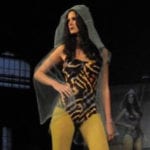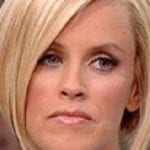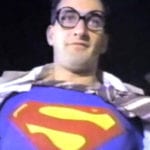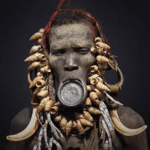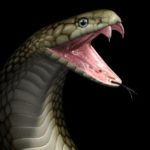 Music
Music  Music
Music  History
History 10 Less Than Jolly Events That Occurred on December 25
 Weird Stuff
Weird Stuff 10 Funny Ways That Researchers Overthink Christmas
 Politics
Politics 10 Political Scandals That Sent Crowds Into the Streets
 Weird Stuff
Weird Stuff Ten Bizarre Facts About The Doge Meme
 Our World
Our World 10 Ways Your Christmas Tree Is More Lit Than You Think
 Movies and TV
Movies and TV The 10 Coolest Stars to Set Sail on The Love Boat
 History
History 10 Things You Didn’t Know About the American National Anthem
 Technology
Technology Top 10 Everyday Tech Buzzwords That Hide a Darker Past
 Humans
Humans 10 Everyday Human Behaviors That Are Actually Survival Instincts
 Music
Music 10 Surprising Origin Stories of Your Favorite Holiday Songs
 History
History 10 Less Than Jolly Events That Occurred on December 25
 Weird Stuff
Weird Stuff 10 Funny Ways That Researchers Overthink Christmas
Who's Behind Listverse?

Jamie Frater
Head Editor
Jamie founded Listverse due to an insatiable desire to share fascinating, obscure, and bizarre facts. He has been a guest speaker on numerous national radio and television stations and is a five time published author.
More About Us Politics
Politics 10 Political Scandals That Sent Crowds Into the Streets
 Weird Stuff
Weird Stuff Ten Bizarre Facts About The Doge Meme
 Our World
Our World 10 Ways Your Christmas Tree Is More Lit Than You Think
 Movies and TV
Movies and TV The 10 Coolest Stars to Set Sail on The Love Boat
 History
History 10 Things You Didn’t Know About the American National Anthem
 Technology
Technology Top 10 Everyday Tech Buzzwords That Hide a Darker Past
 Humans
Humans 10 Everyday Human Behaviors That Are Actually Survival Instincts
8 Examples of Precognition in Literature
Precognition involves the theory that people are able to think of an event before it happens. It is still considered supernatural—a form of clairvoyance—and not generally accepted as possible. The most famous literary example is Morgan Robertson’s Futility: or the Wreck of the Titan, to which Listverse has already drawn attention. Here are eight other examples to stretch your belief in coincidence.

Game of Death was Bruce Lee’s final film, and he died before he could finish it. The film is about villains kidnapping his character’s girlfriend, and forcing him to fight them one on one. In an early scene, his character, who plays a martial arts action star, is rehearsing for a scene and is supposed to be shot at with blanks. One of the villains loads his gun with a real bullet and shoots Lee’s character in the face.
Twenty years later, Bruce Lee’s son, Brandon, was filming The Crow, which is about an ordinary man who is killed by a gang of thugs who rape and kill his fiancee as well. Lee’s character comes back from the dead and exacts revenge. With the film almost completed, one of the scenes required Lee to walk on set and be shot by FunBoy, played by Michael Massee.
The weapon is a .44 magnum revolver, and a few days earlier, a scene required a close-up view of the weapon loaded with what appears to be live ammunition. These are dummy rounds: a bullet, a casing, and a primer if the primers are required to be shown, but no gunpowder. If the primers are not shown, they are either spent primers, or the casings are unprimed. This particular gun did not require live primers, and had spent ones in its ammunition.
One of the handlers tested the weapon by dry-firing it to be sure it was safe, and heard a loud pop. Upon inspection, nothing seemed out of the ordinary, and the weapon was set aside. What had happened was one of the dummy rounds had a live primer, which it should not have had. In the absence of powder, the bullet was pushed out of the casing, but not out of the barrel.
In the fatal scene, Massee had no idea the gun had a bullet in it, and fired what he thought was a blank. The full charge of powder propelled the the bullet out of the barrel and into Lee’s abdomen just as if a live round had been used. He was shot point-blank with a .44 magnum. The bullet perforated his intestine and lodged in his spine. He bled to death about six hours later despite surgery.

The Lone Gunmen was a spin-off from The X-Files, and featured the three titular characters experiencing adventures surrounding conspiracy theories, government cover-ups, and computer hacking. The pilot episode premiered on March 4, 2001, and proved very popular. It depicted the trio uncovering a United States government plot to have a commercial airline hijacked and flown into one of the World Trade Center towers in New York City. The government’s intent is shown to be a desire to sell more weapons to American civilians, and militaries around the world in the ensuing global fear of terrorism.
Six months and one week later, both World Trade Center towers were in fact destroyed by commercial airliners hijacked by Islamic terrorists. The Lone Gunmen episode aided immeasurably in fueling paranoia about a US government conspiracy and cover-up. The conspicuous height of the WTC towers always provided fear that a plane could strike them. It was no secret that they were the most obvious targets in the entire city, much wider at their tops than the Empire State Building, which tapers. But the similarity with the pilot episode is no less uncanny.

Platform is a 2001 novel by French author Michel Houellebecq, in which the main character, Michel Renault, travels to Phuket, Thailand, a popular international tourist spot, for various purposes, among them sex with cheap prostitutes. While there, he is an eyewitness to a terrorist bombing of a night club that kills two hundred people. Houellebecq stated later that one number was as good as another, and he chose two hundred arbitrarily. The terrorists are depicted driving a minivan loaded with fertilizer explosives into the building.
On 12 October 2002, in Bali, Indonesia, Jemaah Islamiya terrorists detonated minivans filled with potassium chloride, sulfur, and aluminum powder, wrapped in PETN detonation cord in the street between Paddy’s Pub and Sari’s Club. A suicide bomber had first killed himself by detonating his backpack inside Paddy’s, forcing the patrons into the street where the car bomb exploded. Two hundred and two people were killed, and another two hundred and nine wounded.
The two locations are 1,134 miles (1825km) apart, but this seems to be trumped by the similarities in attack methods and numbers of dead.
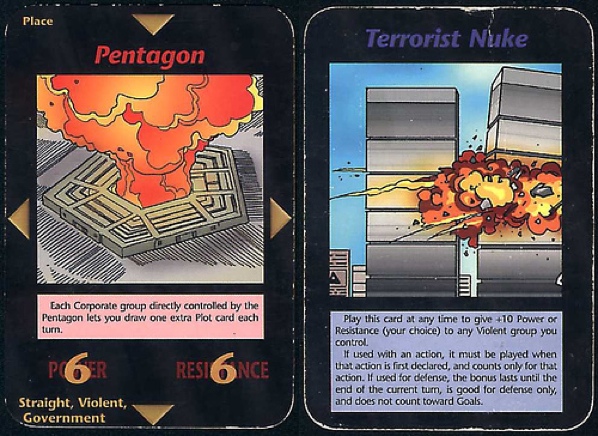
This trading card game has been marketed by Steve Jackson Games since 1982 and is still popular. Expansions, in the way of cards, are frequently added to the game, and in 1995, new conspiracy theories were propagated for the game revolving around the Illuminati effecting a “fire sacrifice to Satan” by nuking the World Trade Center in New York City. At the same time, they nuked the Pentagon.
Cards were sold depicting precisely this, and the card for blowing up the WTC is now legendary across the Internet. Though it predated the actual terrorist bombings by six years, the fiery explosion appears to occur in the South Tower, at almost the very spot where the plane struck, about the 80th floor. The tower is drawn on the card as toppling over, exactly as it did in reality, not pancaking straight down as the North Tower did.

Beyond the Spectrum is a 1914 short story by Morgan Robertson, the same man whose novella Futility seems to preconceive the sinking of Titanic. At the time of publication, the United States of America and the Empire of Japan were not at war, but the story details a future war between the two instigated by Japan launching a sneak attack against American merchant and military vessels having just departed Pearl Harbor, Oahu, Hawaii. Japanese submarines then attempt to invade the US mainland at San Francisco.
The story’s similarity to the Japanese attack on Pearl Harbor in 1941 is remarkable, but the addition of a West Coast invasion is especially noteworthy, since the Japanese did draft plans for an invasion through San Francisco.
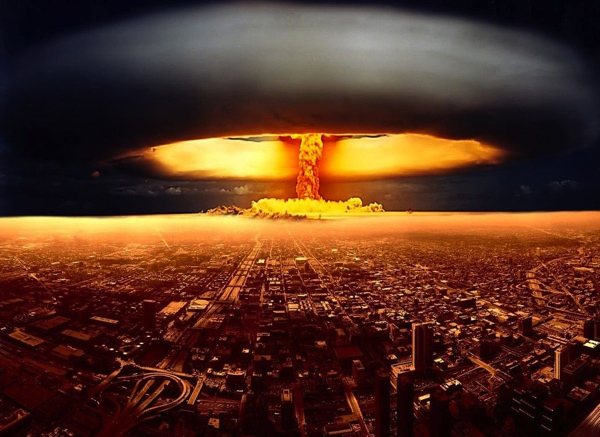
The World Set Free is a novel by H. G. Wells, one of the finest science fiction authors in history. It was published in 1914, and Wells states in the preface that every intelligent person in the world knew that Europe was about to erupt in global warfare. The novel is his attempt to show the world the true horror of war, by envisioning humanity’s invention of the atomic bomb. Wells himself coined the term “atomic bomb” in this novel.
He had very little idea how nuclear physics worked, but read that atoms possess gargantuan amounts of energy, which could not be harnessed in his time. It was not until 1945 when the theories primarily of Albert Einstein and Leo Szilard were implemented at Alamogordo, New Mexico. Neither Wells nor anyone else in human history had any idea before 1945 what a nuclear explosion would look like. Wells described it as no more powerful than the most powerful conventional bomb, but instead of releasing that energy instantaneously, an atomic bomb would release it slowly over a long period of time, turning a vast area into an utter wasteland.
He imagined a single bomb laying waste to a city the size of London in a duration of just under one hour. It was his idea (and hope) that atomic bombs would make warfare so horrific that the first war to use one would be the last one ever fought.
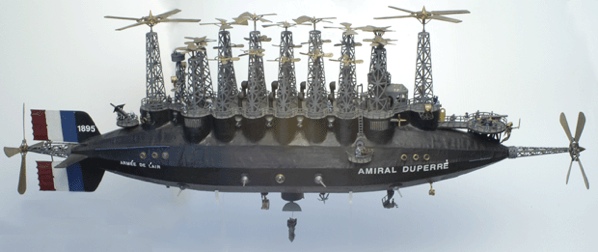
Robur is a novel by Jules Verne, published in 1886, one of the first stories to deal with the invention of lighter-than-air travel. At the time, airships existed, but with very limited ability. They were simple balloons, some with propellers, designed to travel short distances at low altitudes. The story begins with a worldwide wave of strange sights and sounds in the sky. Black and gold flags are placed on top of the world’s tallest landmarks, and no one can figure out how the titular character has been able to put them there.
Today, UFOs are common sights among conspiracy theorists, and most can be explained as mistaken airplanes, tricks of light, “swamp gas from a weather balloon,” and simple pareidolia. But in 1896, there were no airplanes, and no reason at all why anyone should have thought to look for flying machines over their heads. Cars were a brand-new technology, and a luxury very few could afford.
But beginning in November of that year, very suddenly, sighting of aerial machines began spreading from the western United States. The first sighting seems to have come from Sacramento, California, where over 200 witnesses claimed to see a slow moving light about 1,000 feet up in the night sky, crossing over the city. No skyscrapers had yet been built by then, and behind the light, a dark, oblong shape was visible. One witness claimed to see two humans powering the craft via bicycle pedals, which must have been turning an unseen propeller. Others claimed to hear an entire chorus of voices singing onboard.
Such reports very quickly spread to neighboring cities, and eastward across the entire continent, until the east coast began reporting strange ovoid, lighted airships at night. Within a year, even Europe was reporting similar sightings. The occupants were usually described as humans, but sometimes as “Martians.” The rumors grew so feverish that Thomas Edison had to issue a statement in major newspapers around the world explaining that he had absolutely nothing to do with it. When informed of the phenomena, Nikola Tesla just smirked and refused to confirm or deny his involvement. The first airship capable of long, guided flight was built in 1785 by Jean-Pierre Blanchard, who crossed the English Channel with it. But there were only a handful of airships across the whole world until 1900, and none known to reside in the western United States in 1896.
Many of these sightings were definitely hoaxes perpetrated by newspaper journalists, but many of them were reported by hundreds, sometimes thousands, of ordinary people, whose reports matched in description, speed, and location. The sightings continued into the teens of the 1900s, by which time, the modern dirigible had been invented and was common.
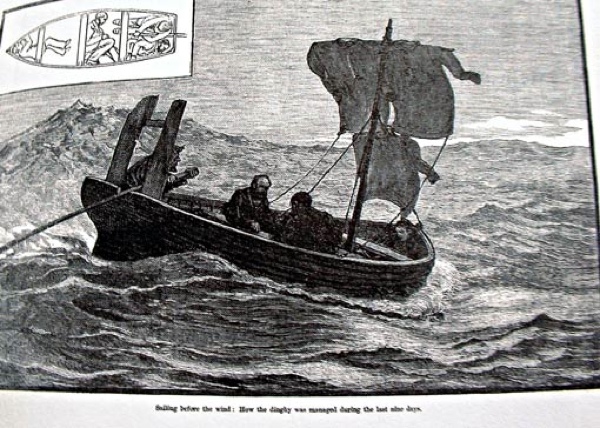
The Narrative of A. Gordon Pym is Edgar Allan Poe’s only novel, a sea epic quite unlike his gothic writing, and which was not very popular in his time. He remarked that he would not bother with another long work again. He published it 1838. One of the most disturbing scenes in the story, true to Poe’s usual genre, involves four men adrift in the whaling ship Grampus, which they take over through mutiny, but which a severe storm renders inoperable.
One of them, named Richard Parker, suggests drawing straws to see who should be killed so the others have food. Parker draws the short one and is killed and eaten. One of the other three dies later from wounds, and the other two are rescued.
On July 5, 1884, the leisure yacht Mignonette was sailing 1600 miles (2575km) east of the Cape of Good Hope, South Africa, 700 miles (1130km) from the nearest land, when a storm caused the yacht to break up and sink in five minutes. The crew of four lowered the only lifeboat and was adrift in the open sea from the fifth until the twenty-ninth of July. The four men were Captain Thomas Dudley, Edmund Brooks, Edwin Stephens, and 17-year-old cabin boy Richard Parker.
By July 23 or 24, Parker had lapsed into a coma from drinking seawater. The other three, who had families, agreed to kill and eat him to survive. Dudley cut the boy’s carotid artery with a pocket knife. They then ate almost his entire body, and drank most of his blood, before sighting a sail on the 29th.


